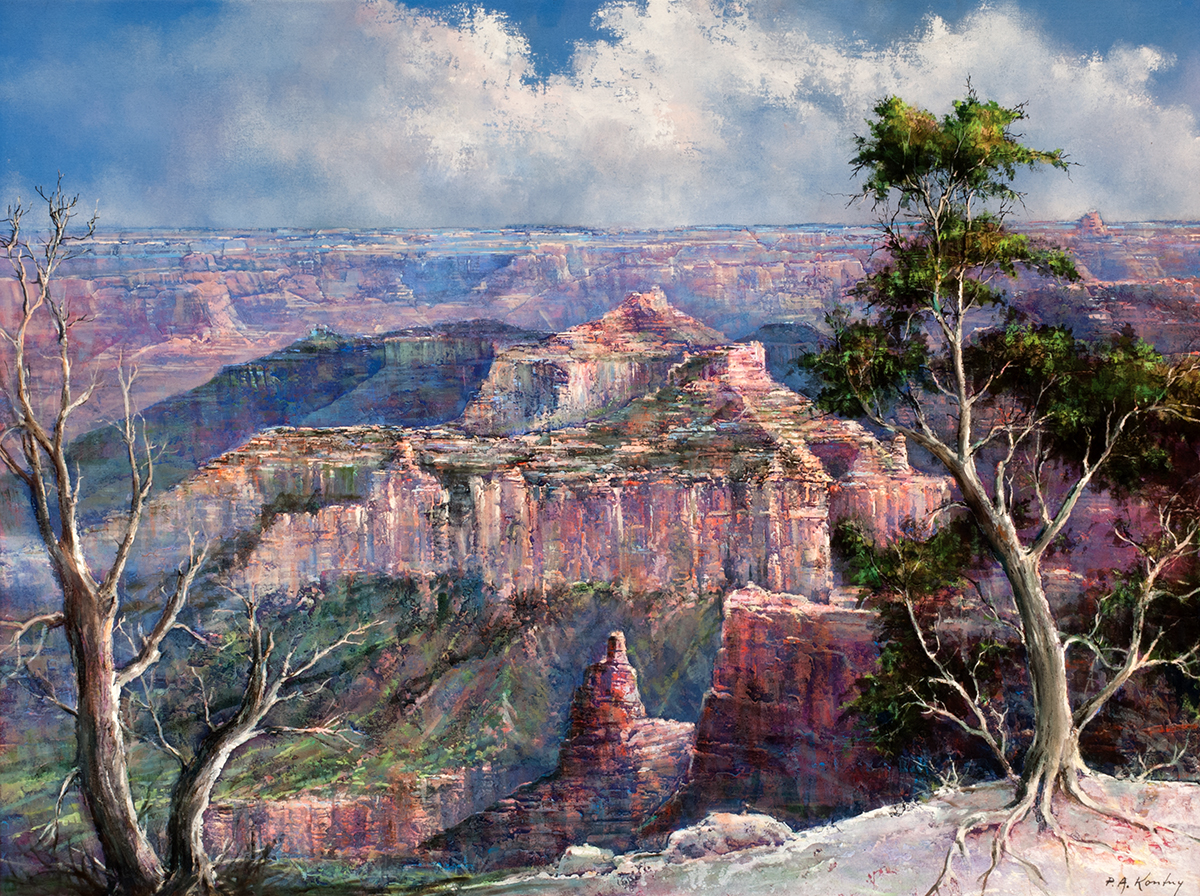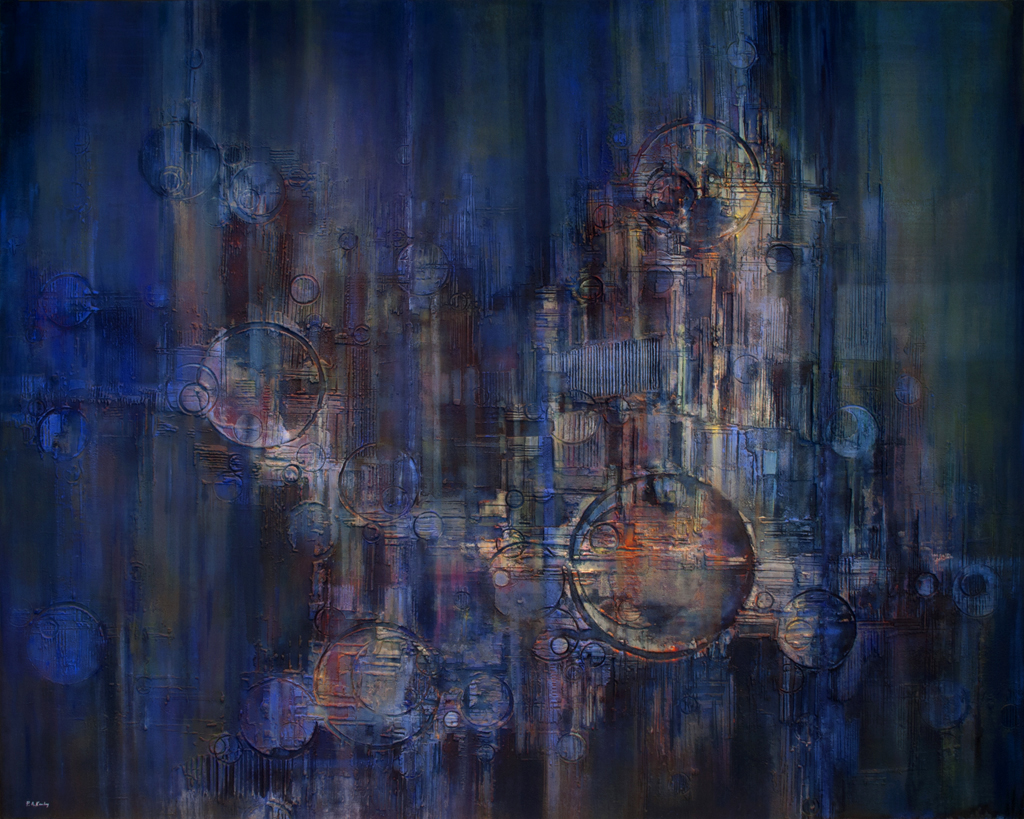collections
Grand Canyon
Pawel Kontny was born in Siemianowice Śląskie, Poland in 1923. Although he experimented with painting and other forms of art as a young man, he studied architecture in Breslau, Germany (today Wroclaw, Poland) because his father was concerned about his future livelihood as an artist. World War II interrupted his studies when he was drafted into the German army. While serving on the Eastern Front he documented his war experiences in sketches and drawings, which he temporarily stored in his gas mask canister, later mailing them to his parents. Captured by Allied forces at the end of the war, his talent so impressed General Wade H. Haislip of the 7th US Army and the Western Military District in Germany that he dispatched him under armed guard on a private sketching trip to northern Italy, including Venice. After his release, Kontny helped build the new European publishing center in Altdorf, Germany, of Stars and Stripes, the American military newspaper. In 1946 he joined the Union of Nuremberg Architects rebuilding parts of the city destroyed by Allied wartime bombing. After a successful art career in postwar Nuremberg where he married and started a family, Kontny decided to relocate to Denver with his wife and children in 1962, having visited the Mile High City two years earlier at the invitation of John Pogzeba, an art dealer he knew in Europe. A versatile artist, Kontny worked in a variety of media, but his signature was marble dust. Many of his paintings reflect his interest in architecture and buildings which he depicted in a three-dimensional format achieved by first sculpting the image with a thick impasto mixture of different grades of marble dust. After it dried, he applied color using a series of thin oil paint glazes. The American moon landing in 1969 inspired Kontny to create Cosmic, the first of his many abstract compositions of the universe, an oeuvre also figuring prominently in Vance Kirkland’s creative output.
collections
Untitled (Cosmos Series), Pawel (Paul) Kontny (1923-2002, Silesian [German-Polish])
Pawel Kontny was born in Siemianowice Śląskie, Poland in 1923. Although he experimented with painting and other forms of art as a young man, he studied architecture in Breslau, Germany (today Wroclaw, Poland) because his father was concerned about his future livelihood as an artist. World War II interrupted his studies when he was drafted into the German army. While serving on the Eastern Front he documented his war experiences in sketches and drawings, which he temporarily stored in his gas mask canister, later mailing them to his parents. Captured by Allied forces at the end of the war, his talent so impressed General Wade H. Haislip of the 7th US Army and the Western Military District in Germany that he dispatched him under armed guard on a private sketching trip to northern Italy, including Venice. After his release, Kontny helped build the new European publishing center in Altdorf, Germany, of Stars and Stripes, the American military newspaper. In 1946 he joined the Union of Nuremberg Architects rebuilding parts of the city destroyed by Allied wartime bombing. After a successful art career in postwar Nuremberg where he married and started a family, Kontny decided to relocate to Denver with his wife and children in 1962, having visited the Mile High City two years earlier at the invitation of John Pogzeba, an art dealer he knew in Europe. A versatile artist, Kontny worked in a variety of media, but his signature was marble dust. Many of his paintings reflect his interest in architecture and buildings which he depicted in a three-dimensional format achieved by first sculpting the image with a thick impasto mixture of different grades of marble dust. After it dried, he applied color using a series of thin oil paint glazes.


